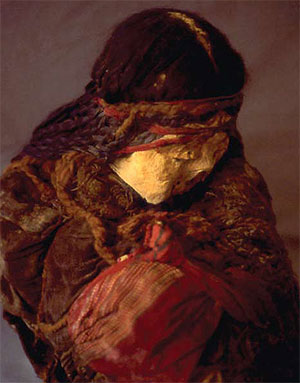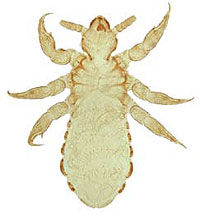
Photo by Sonia Guillen
Lice from 1,000-year-old mummies in Peru may unravel important clues about a different sort of passage: the migration patterns of America’s earliest humans, a new Florida Museum of Natural History study suggests.
“It’s kind of quirky that a parasite we love to hate can actually inform us how we traveled around the globe,” said David Reed, assistant curator of mammals at the Florida Museum of Natural History and one of the study’s authors.
DNA sequencing found the strain of lice to be genetically the same as the form of body lice that spawns several deadly diseases, including typhus, which was blamed for the loss of Napoleon’s grand army and millions of other soldiers, he said.
The discovery of these parasites on 11th century Peruvian mummies proves they were infesting the native Americans nearly 500 years before Europeans arrived, Reed said. His findings were published in an online edition of the Journal of Infectious Diseases in February 2008.
“This definitely goes against the grain of conventional thought that all diseases were transmitted from the Old World to the New World at the time of Columbus,” Reed said.
It came as a surprise to Reed and his research team that the type of lice on the mummies was of the same genetic type as those found as far away as the highlands of Papua, New Guinea, instead of the form of head lice that is widespread in the Western Hemisphere. This latter version, the bane of many school children, accounts for more than half the cases of lice that appear in the United States, Canada and Central America, he said.
“Given its abundance in the Americas on living humans, we thought for sure that this form of lice was the one that was here all along and had been established in the New World with the first peoples,” Reed said. “We hope to be able to understand human migration patterns by investigating their parasites since people have carried these parasites with them as they moved around the globe. Called a parascript, it’s a whole other transcript of our evolutionary history that can either add to what we know or in some cases inform us about things we didn’t know.”
Looking at evidence from parasites’ perspectives, for example, may yield valuable clues about when the first Americans arrived on the continent and which route they took, Reed said. Building upon this DNA sequencing work, scientists may be able to link the 1,000-year-old lice found in the Western Hemisphere with those in Siberia or Mongolia, confirming existing theories that America’s earliest residents originated there.

Photo by Sonia Guillen
Had these immigrants traveled by land masses, there was a very small window of time, about 13,000 years ago, when the glaciers retreated enough to allow passage through the Bering Strait on the way to South America, Reed said. Another proposed theory is a seafaring route, but this would have required sophisticated oceangoing vessels for which no evidence from the time exists.
Being able to chart these early migration patterns would give insight into how these early immigrants lived, Reed said. “If you’re skirting the edge of glaciers, it’s obviously a very cold time period and humans would have needed certain creature comforts just to stay alive, such as tight clothing to maintain warmth,” Reed said.
Today, the people who don’t have the opportunity to change their clothes are the ones at risk for epidemic typhus, which along with the lesser-known diseases of relapsing fever and trench fever are carried by body lice, Reed said. These pests lay their eggs in clothing fibers and washing the clothes is all it takes to get rid of them.
“The disease pops up primarily in refugees who have been displaced from their homeland with the clothes on their backs and nothing else,” he said. “They’re living in crowded conditions where hygiene is poor.”
Reed said he hopes the team’s lice research might someday increase human understanding of typhus by pinpointing where the disease originated.
Studying parasites to learn about their hosts’ history has been around for only about 20 years. “By looking at things like tapeworms, pinworms, lice or bedbugs that humans have carried around for at least tens of thousands of years, and in some cases millions of years, we can learn much more about human evolutionary history,” Reed said.